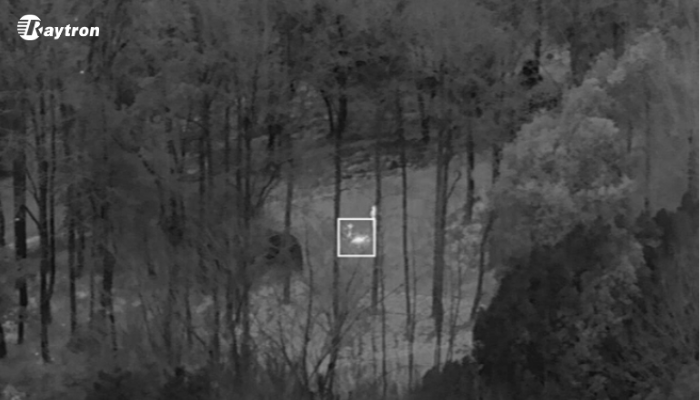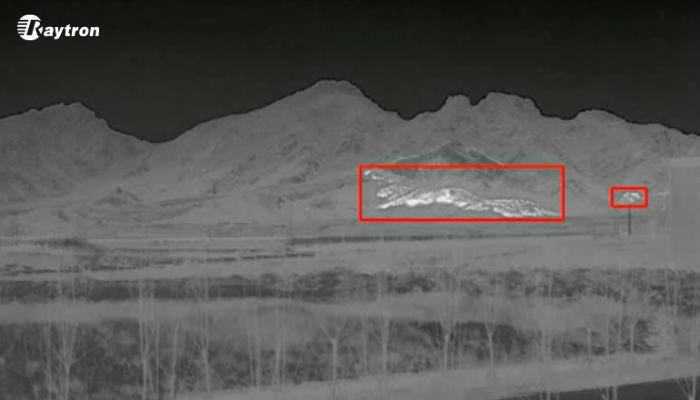Forest fires are a significant threat to our natural environment, wildlife, and human settlements. Every year, thousands of acres are lost to these devastating blazes, leaving lasting ecological and economic damage. Early detection and prevention are crucial for minimizing the impact of these fires. One of the most effective tools in this fight is the thermal imaging system. This technology has revolutionized how forest fires are monitored, detected, and controlled. Here's how thermal imaging systems are contributing to a safer and more sustainable world.
How Thermal Imaging Systems Work
Thermal imaging systems detect heat by capturing infrared radiation emitted by objects. Every object emits some level of infrared radiation, which increases with temperature. Thermal imaging systems can identify temperature differences that are invisible to the human eye. In a forest environment, this means detecting early signs of abnormal heat build-up, such as smoldering vegetation or hot spots, which may indicate a potential fire hazard.
These systems work effectively both day and night, regardless of weather conditions. Unlike traditional surveillance cameras, thermal imaging is not hindered by darkness, smoke, or dense foliage. This makes it an indispensable tool for early fire detection, allowing rapid response before a small spark turns into an uncontrollable wildfire. Raytron offers advanced thermal imaging solutions that enable accurate and early detection of potential forest fire hazards, ensuring timely preventive measures and effective monitoring.

Applications of Thermal Imaging in Forest Fire Prevention
1. Early Detection of Fire Hazards
One of the primary benefits of thermal imaging is its ability to detect high-risk areas before a fire starts. Thermal cameras can identify unusually warm regions in a forest, indicating dry and potentially flammable vegetation. This allows forestry officials to take preventive measures, such as clearing debris, applying water, or initiating controlled burns to reduce fire risks.
2. Real-time Monitoring During Wildfires
In active fire scenarios, thermal imaging systems are used to track the movement of a fire in real-time. Firefighters can observe the fire’s progression, identify the hottest spots, and deploy resources where they are needed most. Real-time data helps in creating more accurate evacuation plans, protecting both residents and wildlife. This data-driven approach significantly improves firefighting efficiency and reduces the risks for emergency personnel.
3. Enhanced Post-fire Analysis
Thermal imaging does not stop at fire suppression. After a fire is extinguished, it can help detect any remaining hot spots that could reignite. Additionally, it aids in analyzing the affected areas, assessing the environmental impact, and planning restoration efforts. This technology provides a comprehensive overview of the fire-affected region, supporting more effective recovery measures.

A fire point 2km away can also be detected by the Raytron thermal imaging system in time
Advantages of Using Thermal Imaging for Forest Fire Prevention
High Accuracy and Reliability
Thermal imaging systems offer precise data with minimal false alarms. Unlike visual inspections, which can be subjective and limited by environmental factors, thermal data is more consistent and reliable. This accuracy is crucial in large forested areas, where rapid detection is key to preventing widespread damage.
Cost-Effectiveness in the Long Run
While the initial investment in thermal imaging technology can be significant, the long-term benefits outweigh the costs. Early detection reduces the scale and expense of firefighting operations, lowering the financial burden of fire damage repairs. Additionally, thermal imaging contributes to reducing insurance costs for at-risk regions by minimizing the likelihood of catastrophic fires.
Non-invasive and Environmentally Friendly
Thermal imaging is a non-invasive method that does not interfere with wildlife or the natural environment. It operates passively, using heat signals to detect potential hazards. This makes it an ideal solution for monitoring sensitive ecological zones without causing disruptions or additional environmental impact.

The Future of Forest Fire Prevention with Thermal Imaging
The development of more advanced thermal imaging systems continues to evolve. New innovations include higher resolution cameras, artificial intelligence (AI) integration, and improved sensitivity to temperature variations. These advancements will further enhance the precision and efficiency of fire monitoring. Integrating these systems with satellite monitoring and drones also shows promise. Such a combination could provide a comprehensive aerial view of vast forest regions, enabling rapid identification of high-risk zones and better coordination of firefighting efforts. With technological improvements, the role of thermal imaging in forest fire prevention will only become more critical, safeguarding both human lives and our planet's natural resources.
Thermal imaging systems have become indispensable in the ongoing battle against forest fires. Their ability to detect heat anomalies, monitor fires in real time, and support post-fire analysis makes them a key asset for environmental protection agencies and firefighting teams worldwide. As technology continues to advance, thermal imaging will play an even more vital role in preserving forests and preventing the devastating impacts of wildfires.